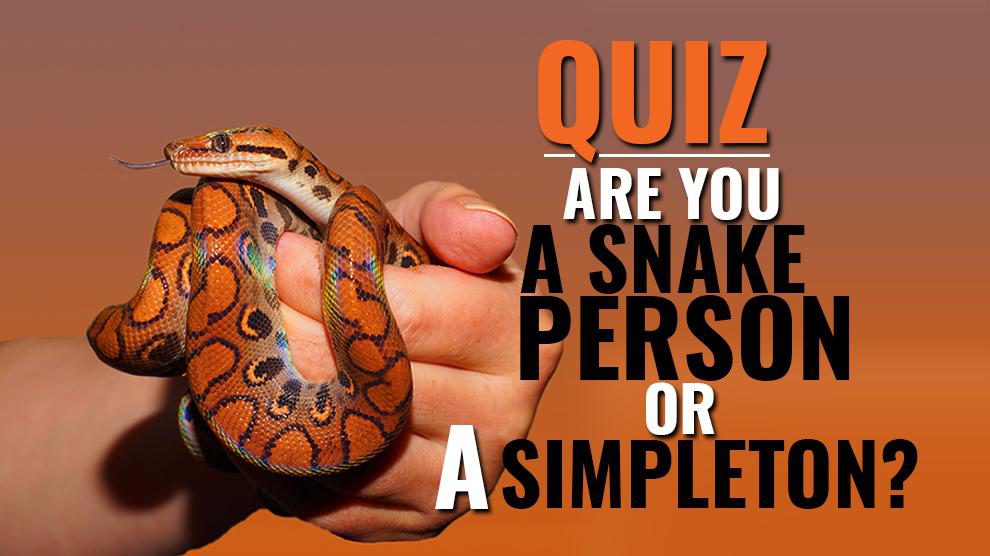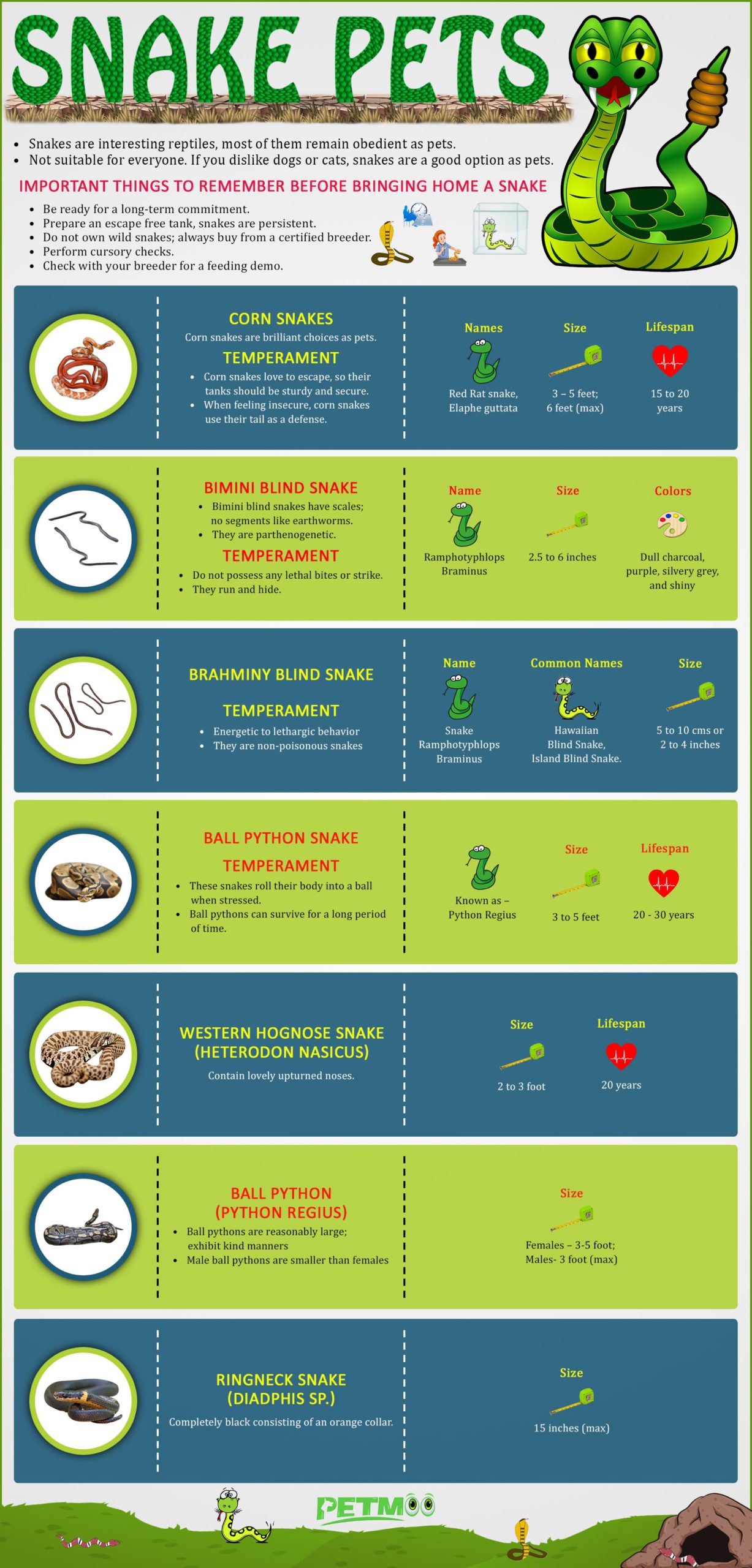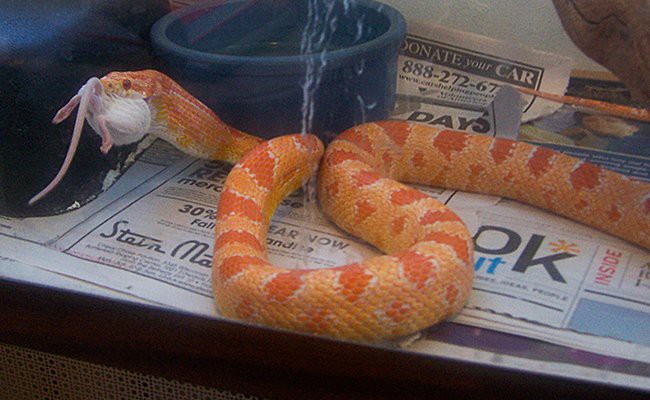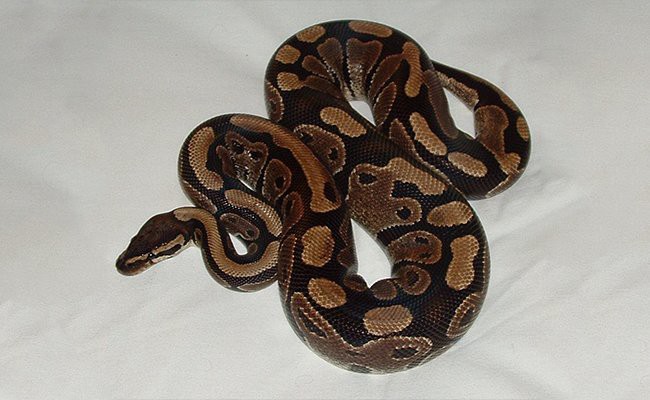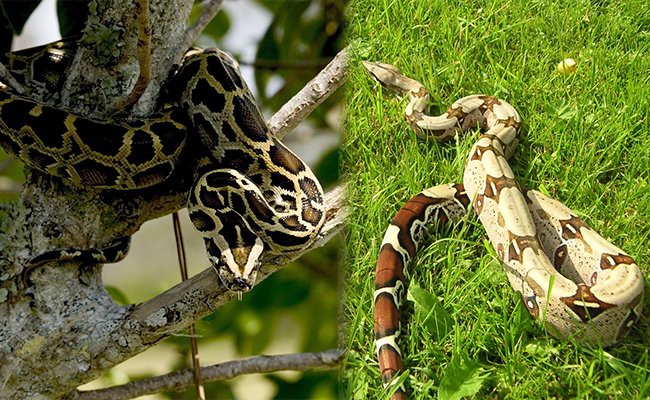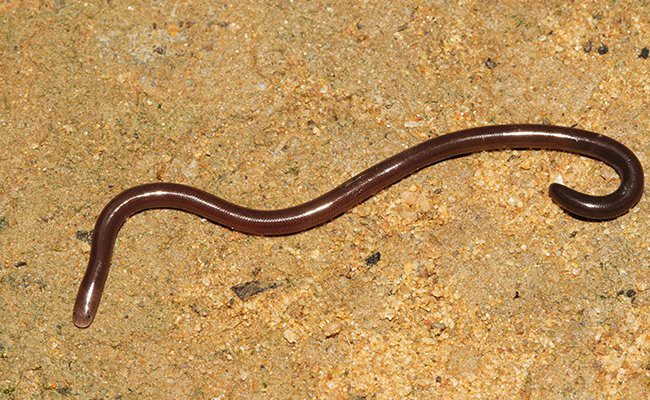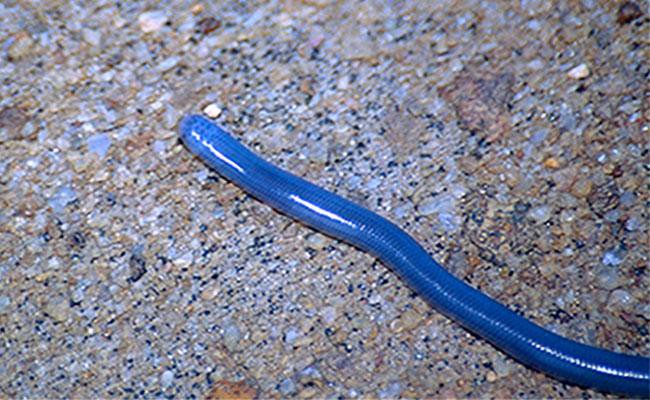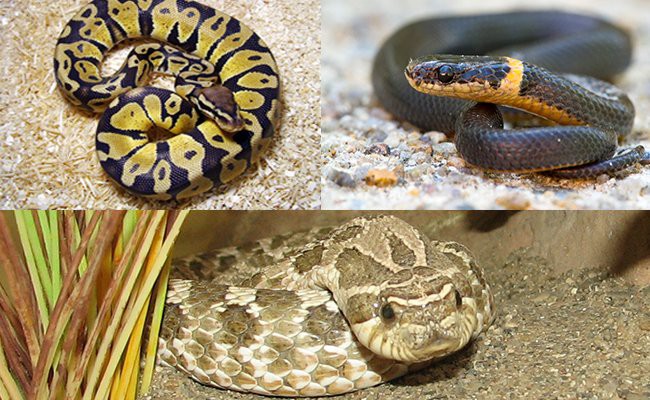- Snake Pets Infographic
- Are Snakes Really Good Pets?
- Licensing And Regulation
- Important Things To Bear In Mind Before Bringing Home A Snake
- Corn Snakes And Corn Snakes Care
- Ball Python Snake - Do Ball Pythons Behave Well As Domestic Pets?
- How To Choose The Right Ball Python?
- Other Breeds Similar To Ball Python
- Bimini Blind Snake
- Brahminy Blind Snake
- Smallest Snake Pets
Snakes are not only interesting reptiles but with knowledgeable care, most of them remain obedient as pets. On the contrary, snake pets are definitely not suitable for everyone. Also, if you dislike dogs or cats, snakes are a good option as pets.
They have distinct needs and only people with proper understanding and commitment can handle them. In this article, let ’s learn more about snake pets and why snakes are good pets.
QUIZ
This knowledgeable and fun quiz tests whether you are snake person or a snake simpleton.
Take this quiz and learn whether they can be a valuable addition in your life or not. Let’s slither! Don’t forget to answer all the questions, and share your results on Facebook.
Below the quiz is the complete article, capturing all that you need to know about snake pets.
[wp_quiz_pro id=”12072″]
Are Snakes Really Good Pets?
Firstly, snakes appear enticing and provided with proper respect, they will trust their owners. They normally shed their skin and it’s really easy to dispose of.
Some common reasons why snakes are good pets
- Snakes are easy to maintain – Any exotic pet, namely fish or birds, often causes tension and new-comers believe that it requires years of experience. On the other hand, snakes are easy to maintain provided enough effort has been taken to keep them safe and secure.
- They require less time – Snakes require very less attention and time than dogs or cats. In fact, if you provide them with proper food, clean their tank, then your pet snake will appear happy and healthy.
- Snakes are inexpensive – Its price depends on several factors. Some of the important factors include species, size, and age. Furthermore, the regular kit and care needed for a pet snake are inexpensive. Once you set up their tank and meet their daily needs, they work out quite economical.
- Snakes release no odour – If you regularly keep your snake tank clean and disinfect it, it will produce no odour. Moreover, the daily removal of snake excreta, as well as other uneaten food, will help you keep the tank clean and safe.
- Snakes are silent creatures – Cats produce a meow while dogs bark but snakes hiss, which is non-intrusive and silent.
- Requires less space compared to big pets – It’s vital that your pet’s tank remains large enough but a metre long is sufficient.
- Snakes are not as dangerous as perceived – Most of the beginner snakes are non-poisonous. However, they are carriers of salmonella bacteria and hygiene protocols must be followed as strictly as possible.
- Makes for an interesting spectacle – While snakes are always active like lizards, just watching their movements can be meditational. In addition, they offer a golden chance to introduce your kid to the reptile world and encourage them to understand animal care.
Licensing And Regulation
In the United States, some states may require a special permit to keep animals like a snake as pets. Also, each and every state consists of a different set of regulations. Therefore, you better contact your local authority before adopting a snake.
Furthermore, if you are planning to move interstate, be sure to contact your local authorities. In fact, the classification changes significantly between jurisdictions.
Are Pet Snakes allowed in the UK?
Yes. The UK government allows you to keep snakes at home but only after following certain precautions. To learn more, feel free to visit Legislation.gov.uk and Gov.uk
Other things to keep in mind
If you are still eager to bring home a snake, check with your local housing authorities. If you live in a rented space, contact your landlord. After all, proper planning prevents all sorts of the troubles in the near future.
Then, choose the right species and build a sturdy, ventilated terrarium. Set the enclosure, and check the humidity and temperature for a week.
Important Things To Bear In Mind Before Bringing Home A Snake
Before choosing a snake, remember that you are getting ready for a very long commitment and some species survive at least 20 years.
You must be prepared to feed frozen pet foods such as rodents to your pet snake. They are known for their perseverance and they will find an escape route squeezing through any small gaps. So, you prepare an escape-free tank.
Venomous and large constricting snakes are generally not recommended due to safety concerns. Always buy a snake from a certified breeder because wild snakes are difficult to handle.
You can perform a cursory check and check for any bubbles, mouth rot, closed eyes or retained skin.
Also, ask your breeder for a feeding demo to ensure that your snake is eating without any problem. At times, ball pythons are adamant feeders and this is a good move to check their feeding habits.
Corn Snakes And Corn Snakes Care
These snakes are not only docile but are fairly simple to maintain, and are reasonably sized. Moreover, they are easy to locate at a show since they are very popular.
Corn snakes are brilliant choices as pets. They are closely linked to rat snakes and belong to genus Elaphe. Sometimes, they are also known as red rat snakes( amelanistic color schemes).
- Names – Red Rat snake, Elaphe guttata, or corn snake
- Size – Known to reach around 3 – 5 feet and sometimes they reach 6 feet
- Life expectancy – They live between 15 – 20 years.
Corn Snakes Temperament and Behavior
These snakes are not adverse to people touching them and are quite docile by nature. They love to burrow and as well as hide. For this purpose, a decent sized tank and loose sand lining on the bottom is recommended.
Like the rest, they are known for their escape acumen, so their tanks should be sturdy and secure. Also, they are meat-eaters. In the forest, they attack their prey mostly through smell and not by sight.
Overall, when corn snakes feel insecure or sense danger, and they will use their tail as a defensive tactic.
How to house this Corn Snake?
Picking the right enclosure is an important step in taking care of corn snake. In short, a 20-gallon enclosure sounds good for this snake. They will always search for ways to escape, so a tight lid looks very much necessary.
Another important point, a hide box can be added in the design because corn snakes love curling up. However, the box should not be too large otherwise they will feel odd. Bark pieces also act as good hiding spots.
In fact, some branches for climbing are also appreciated.
Substrate
A number of materials are used as a substrate in this case. The first and foremost choice is the daily newspaper. In addition, it is very simple to remove the newspaper but its appeal is not that great.
“Astroturf” is also another good option. You can cut them into two portions and can alternatively use them. Another option is pine bark chips. Once soiled, these chips can be immediately removed without any problem.
Aspen shavings are also recommended, however, it’s advised to shift the snake for feeding purposes. Also, cedar shavings, pine shavings, corncob, soil, and sand are not suggested for them.
Heat
It’s important to maintain the cage temperature of corn snakes at the optimum. You should manage the temperature between 21 C to 29 C. You can also use heat tape or under tank pads, but they are difficult to check the exact enclosure temperature.
Moreover, corn snakes do not like tropical temperatures, so use incandescent lights very sparingly.
Diet
They prefer pre-killed rats or mice as food. Moreover, the prey size increases depending on the snake size. Adults are happy with one suitable meal every 10 days or week. On the other hand, young snakes require a regular feeding couple of times per week.
Notably, your pet snake’s intake may decline during the shedding period, therefore reduce feeding rate at the time of shedding. Youn can also place a provision for water, and make sure that the bowl is maintained meticulously clean.
Health Problem
Infectious stomatitis refers to a bacterial problem that causes inflammation as well as saliva bubbles around the mouth. If this condition is left untreated, this condition can result in bone infection and the snake may lose its teeth.
In addition, they are prone to respiratory and fungal infections. Respiratory infection symptoms include wheezing or open-mouth breathing.
How to Select Your Corn Snake?
A captive snake looks the best choice and corn snakes breed well in captivity. Therefore, select a snake that does not contain any retained skin. Check whether your snake is free from ticks, mites, scrapes, and posses clear eyes and is active.
In addition, you can also check other snakes that are similar to corn snakes
- King snakes
- Milk Snakes
- Hognose snakes
- Rat snakes
Ball Python Snake - Do Ball Pythons Behave Well As Domestic Pets?
For starters, ball pythons are a pretty good option. In fact, they do not cross 5 feet in length and are docile, and simple to manage.
- Known as – Python regius or Ball python
- Size- Between 3 to 5 feet
- Life-expectancy- Between 20 and 30 years
Temperament and Personality of Ball Pythons
These snakes are called as ball pythons because when stressed the ball pythons roll their whole body into a ball like shape. Infant ball pythons grow nearly a foot every year for at least three years. With proper care, ball pythons can survive for a long period of time.
Wild caught snakes behave adversely due to stress from transport and capture. On the contrary, captive ball pythons are readily available but more expensive.
Ball Pythons Care and Housing
Generally, ball pythons are lethargic snakes. So, a pretty small tank enclosure, a 10 or 20-gallon depending on the size is recommended. For adult ball pythons, a 30-gallon enclosure is more than enough.
Moreover, they are known for their escape skills. Hence, a secure lid is a must.
Housing
There are plenty of options for your pet ball python snake including Astroturf, newsprint, and shredded bark. In this list, Astroturf looks pretty simple because you can use a few pieces and replace the soiled parts as and when required.
Furthermore, create dark hiding places and sturdy branches for your pet snake.
Ideal temperature
In fact, the cage of ball python should be between 27 and 29 C. Not to mention, the night temperature can remain between 23 – 24 C. Moreover, incandescent ceramic heating elements are also preferred to achieve the normal temperatures.
Also, stop using hot rocks and ensure that the heating element is covered and free from direct contact. Setting a large tank for your snake is also another option. Additionally, snakes like soaking in the water during the shedding season.
Diet
Ball pythons relish medium sized rats or mice and require to be fed once every week or two. However, young ball pythons need food once every five or seven days and adult snakes require larger prey.
If interested, you can dangle the prey using forceps in front as well. Particularly, shifting the ball python into a different enclosure for feeding looks apt and also promotes the taming process.
Overall, the snake will never mistake your hand for the prey and associate prey with the other enclosure.
Health problems
In case, if you already house a constricting pet snake at home, any new boa or python must be quarantined. However, experts believe that 3 to 6 months of quarantine time is normal.
Additionally, a vet examination is necessary to check for any external and internal parasites. At times, captive ball pythons avoid food, undergo fasting for months together.
But, as long as the snake’s health condition and weight are normal, there is no room for any panic.
What to do if your pet ball python stops eating?
If your pet snake refuses to eat, carefully check the environment, health, handling, and husbandry to rule out stress-related issues. Next, contact an experienced vet for advice if the snake exhibits noticeable weight loss.
However, you can try feeding a gerbil or hamster, although this can change your snake’s eating habits.
How To Choose The Right Ball Python?
When you have made up your mind, look for a captive bred young ball python. In addition, select a ball python that consists of well-established features including vent, eyes, clean eyes, and body.
Therefore, select a snake that is curious and alert and gently rolls over your arms when held. Also, never hesitate to ask the breeder for a feeding certificate to assure yourself that the snake consumes a meal.
Other Breeds Similar To Ball Python
If you are keen to adopt a ball python, you can try these breeds as well
- Boa-constrictor
- Red-tailed boa
- Burmese python
Bimini Blind Snake
Although Bimini snakes are not active as other snake breeds, they are quite a special snake in the reptile world.
Bimini Snakes Description
- Name – Ramphotyphlops braminus
- Size – around 2.5 to 6 inches
- Colours – Dull charcoal, purple, silvery grey, and shiny
If you are not attentive, you might mistake these species for small earthworms. However, bimini blind snakes have scales and do not possess segments like earthworms.
Moreover, the snake looks similar at both ends and only a closer look will determine which is tail and head.
In addition, these snakes possess tiny eyes hidden under translucent scales. These scales actually make the snake blind, permitting it to see the light intensity and not images.
In fact, bimini blind snakes are indeed parthenogenetic. This means these snakes do not produce offsprings like other snakes.
Bimini Blind Snakes Temperament
These snakes are quite similar to earthworms in temperament. These snakes are slow and do not possess any lethal bite or strike. Generally speaking, their defensive tactics include run away, hide, or burrow.
To sum up, housing a bimini blind snake will look similar to maintaining an earthworm. Your bimini blind snake would prefer staying alone, but one can still keep it in the hands if you wish to.
Bimini Blind Snake Care
These snakes have a habit to burrow or hide. To meet that requirement, you can create a moist substrate including organic potting soil.
Particularly, the size of the enclosure may vary depending on the snake’s actual size. In some cases, a clean glass jar is more than enough to house this snake.
Another important point, since these snakes are tropical by nature, create the right kind of lighting. The ideal enclosure temperature can range from 75 – 80 Fahrenheit.
Bimini Snake Diet
In the forest, bimini blind snakes eat small invertebrates including larva, worms, beetles, ants, or termites. Some blind snakes also prefer caterpillar faeces.
In captivity, you feed your pet bimini snake ants or termites as these are easily available. Also, if you can provide them with small insects or aphids, these snakes would love eating that food.
Overall, these bimini blind snakes make excellent pets since they are low maintenance.
Brahminy Blind Snake
- Name – Brahminy blind snake ( Snake Ramphotyphlops braminus)
- Common names – Hawaiian blind snake, island blind snake, common blind snake, flowerpot snake
- Size – Adults measure around 5 to 10 cms or 2 to 4 inches long and in cases 15 cm or 6 inches.
The tail and head appear one and the same as both the neck and head are indistinct. In this species, the head scales are much like the body scales. In addition, the eyes of the Brahminy blind snake looks like small dots placed under the head.
Especially, the tail tip features a small, pointed spur. Moreover, along with the body, this snake contains dorsal scales amounting to fourteen in number. These snakes are found in Thailand and they are native to Asia, particularly Southeast Asia.
Brahminy Blind Snake Colour
The colour of the Brahminy blind snake changes from albino, purplish, light yellow-beige, to silver grey, and charcoal grey. Both the adult and young Brahminy blind snakes have the same colour.
Brahminy Blind Snake Temperament
The behaviour varies from energetic to lethargic, immediately seeking the leaf litter or soil cover to avoid sunlight. These snakes, when confronted, will flip and try their level best to escape from the scene.
In fact, the mouth appears very small and are ineffective to bite humans. Putting all rumours to rest, experts claim Brahminy blind snakes carry no venom and are non-poisonous snakes.
Brahminy Blind Snake Care
Since these snakes have a habit to burrow or hide and it’s important you place a moist substrate like organic potting soil. And, in fact, the smaller snakes are happy to live in a big glass jar.
Blind snakes are, in fact, tropical by nature. So, it’s necessary you create a temperature gradient. For this purpose, you can heat one side with a yellow bulb. The right temperature lies between 75 and 80-degree Fahrenheit.
Overall, if you really wish to improve the ambiance of your pet Brahminy blind snake, provide UV lighting for basking. Interestingly, some snakes are amazingly popular for their behavior of thanatosis or in other words playing dead when threatened.
Brahminy Blind Snake Food
The main diet of Brahminy blind snakes includes pupae, eggs, larvae of termites and ants. They are also known to eat soft-bodied arthropods.
Smallest Snake Pets
While there’s no counter to the fact that large snakes do make good pets, they require more space and care. Not to mention, small snakes also deserve loving homes. They do not need big spaces or labor intensive maintenance.
Ball Python (Python Regius)
Ball pythons are reasonably large and feature pleasant disposition and mild manners. In fact, they are popular pet snakes across the globe. In addition, these snakes breed happily in captivity, which indicates that they are seen in a different range of morphs.
Indeed, you can buy this snake in pure white color and in other coloration and markings. Male ball pythons are small in size compared to female ball pythons.
Females can reach between three to five foot and males reach not more than three feet long.
Western Hognose Snake (Heterodon Nasicus)
Do hognose snakes make good pets?
Most people adore hognose snakes because these snakes contain lovely upturned noses for moving sand. Western hognose snakes vary drastically in terms of markings and color, but all of them are stout-bodied.
In layman’s eyes, they appear like rattlesnakes. Hognose snakes touch two to three feet in length and feature a very long life expectancy. With good care, they can survive up to 20 years or more.
In general, hognose snakes require an enclosure not less than 20 gallons in size. Being burrowers by nature, hognose snakes love sandy substrate.
Also to add, eastern hognose snakes are thick-
Ringneck snake (Diadphis sp.)
Firstly, ringneck snakes are similar to bimini blind snakes in size. They are completely black consisting of an orange collar and hence this name. In fact, adult ringnecks when fully grown will not cross 15 inches in length. They don’t get bigger than a pencil.
Also, in captivity, you better feed them with crickets or night crawlers.
Bimini Blind Snake
There are countless species in this category of blind snakes but all the snakes are tiny in size. In all honesty, these snakes appear so small that people mistake them for earthworms.
Although they resemble the earthworms in size, a bimini blind snake also behaves like them. Being excellent burrowers, these snakes prefer wet or moist soil. In fact, they survive in flower pots, earning them the nickname, flowerpot snake.
Not to mention, bimini snakes have very fewer maintenance requirements. All a bimini snake requires is a glass jar containing a hiding place.

